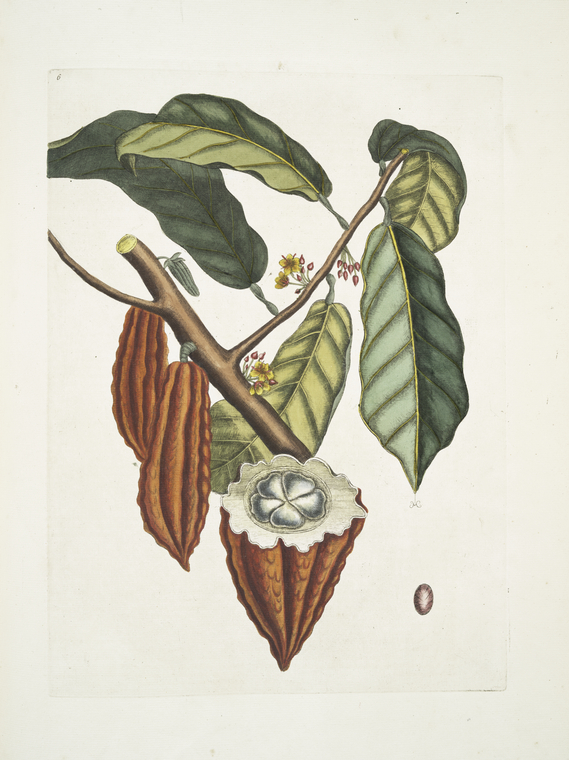Valentine’s Day and Cacao, the Food of the Gods
All you need is love. But a little chocolate now and then doesn't hurt.
― Charles M. Schulz
In modern day society, chocolate is frequently used to express affectionate and romantic gestures. Many will enjoy a piece of chocolate this Valentine’s Day, but only a few will wonder when this tradition started and just how did chocolate become such a favorite savor? Early mentions of cacao and chocolate center around the pre-Columbian cultures of Mesoamerica −most notably the Olmecs, Mayans, and Aztecs. It is one of several contributions that the ancient Mesoamericans left to the world. For the purpose of this blog, cacao will be used to refer to the plant or beans used to make chocolate, and chocolate will be used for anything that is edible and made from cacao beans.
Cacao, with the beverages it yielded, was a treasure to the people of Mesoamerica. It was used as currency, in trade, but most importantly in religious rituals. It served as an offering to the gods as well as to stratify the social structure within society. For instance, it was given to those of status and to soldiers of heroic virtue, as a symbol of power and prestige. Additionally, it was used in social ceremonies accompanying such events as births, marriages, funerals, as well as in diplomatic and political affairs.
It is unknown when cacao was first introduced in Europe by the Spanish conquistadors, although Hernán Cortés is frequently credited with bringing it back from his first voyage. He first tasted a cacao beverage when received by the Aztec Emperor Moctezuma at his palace in Tenochtitlan (later known as Mexico City). For more than100 years, Spaniards kept the source of chocolate (cacao beans) a secret, only releasing chocolate powder to the rest of Europe. Even as chocolate spread throughout the West, only royalty or the wealthy were able to enjoy it, due to its heavy taxation and limited transportation.
In the years that followed, Europeans began attributing a wide range of health benefits to chocolate. It came to be considered a drug utilized for medical purposes, but also used to help disguise unsavory medicines. By 1753, the Swedish scientist Carl von Linné (Linnaeus) renamed the tree – Theobroma cacao – Greek for “Food of the Gods,” to fit the scientific binomial system he invented and that is still used to classify all living things.
So, when and how did chocolate become known as a gift of love, romance and desire? A lot of the beliefs in magical properties that were credited to cacao by the ancient Mesoamericans were retained in colonial America. Bernal Díaz del Castillo, a soldier under Hernán Cortés, wrote accounts of Moctezuma 's court that describe how guards brought cacao-plant drinks in cups of pure gold to the Emperor prior to his visiting his wives. There are also several Spanish Inquisition cases which describe chocolate as sinful--used in acts of witchcraft and magical recipes of seduction.
Chocolate has always been linked to lovers, lust, and desire, but it wasn't until Richard Cadbury, son of John Cadbury, a leading chocolate and cocoa trader in Birmingham, England, that it would forever be linked to Valentine's Day. Richard and his brother, George Cadbury, took over their father's business in 1861. In an effort to advertise and sell more chocolate, Richard Cadbury decided to sell his "fancy"--today known as an assortment of chocolates--in beautifully decorative boxes. Late Victorians loved these artistic, finely wrapped chocolates, and his business boomed. The idea was that the recipient would have a beautifully decorated memento box as a keepsake, long after the chocolate was gone! This led to the idea of giving an artful chocolate box to a loved one on Valentine's Day.
For more Valentine's Day inspirations, browse our holiday postcards collection.
Resources:
- Coe, S. D., & Coe, M. D. (1996). The True History of Chocolate. London: Thames and Hudson.
- Grivetti, L. E., & Shapiro, H.-Y. (2009). Chocolate: History, Culture, and Heritage. Hoboken: A John Wiley Publishing.
- Young, A. M. (2007). The Chocolate Tree: A Natural History of Cacao. Gainesville: University Press of Florida.
- Zelenko, H., Zelenko, H., & Zelenko, H. (2011). De semillas a chocolate: La historia botánica y fabricación del chocolate = Nibs to Chocolate: The History, Botany and Making of Chocolate. Quito,: Z A I Publications.
This post was co-created with Miguel Rosales, Art and Architecture Collection, Stephen A. Schwarzman Building
Read E-Books with SimplyE
 With your library card, it's easier than ever to choose from more than 300,000 e-books on SimplyE, The New York Public Library's free e-reader app. Gain access to digital resources for all ages, including e-books, audiobooks, databases, and more.
With your library card, it's easier than ever to choose from more than 300,000 e-books on SimplyE, The New York Public Library's free e-reader app. Gain access to digital resources for all ages, including e-books, audiobooks, databases, and more.
If you don’t have an NYPL library card, New York State residents can apply for a digital card online or through SimplyE (available on the App Store or Google Play).
Need more help? Read our guide to using SimplyE.


